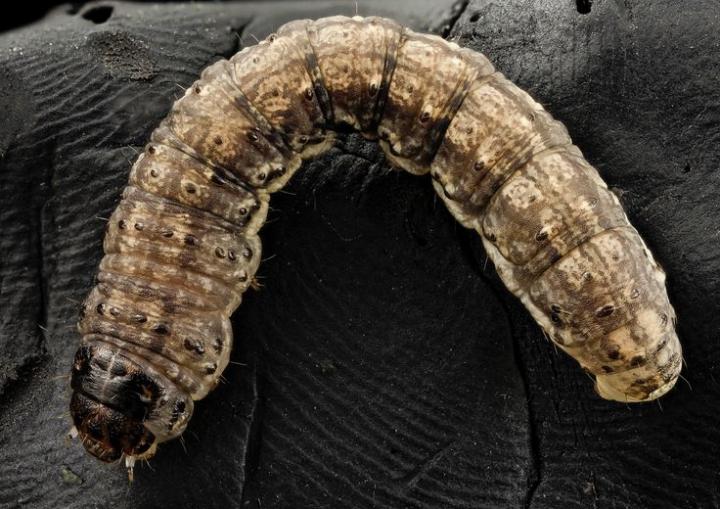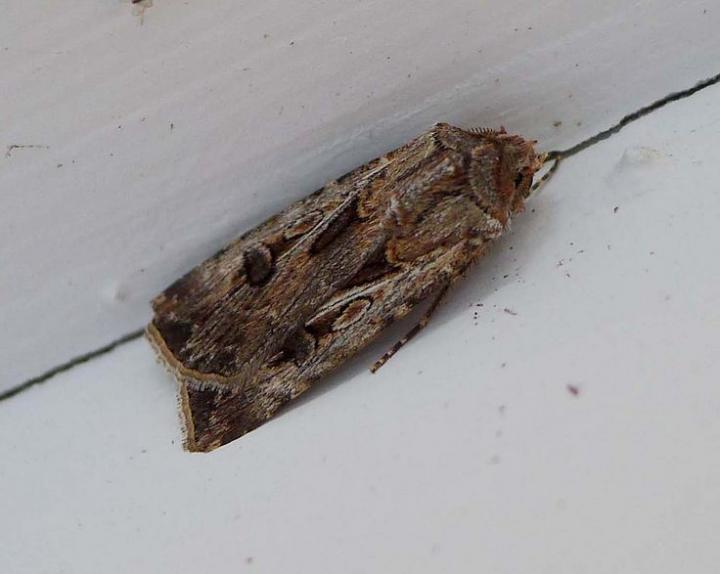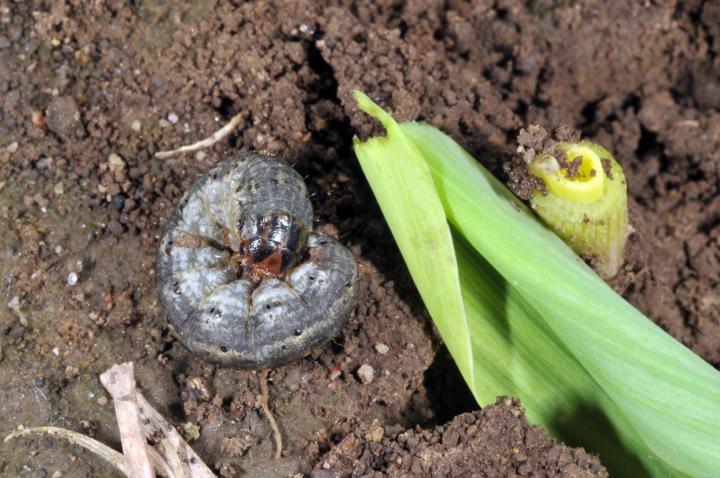






Black cutworms can wreak havoc on your garden, so learn these tips for identification and control.
GrowVeg.com/Sam Droege on Flickr Creative CommonsHere are tips on how to identify, control, and get rid of cutworms in the garden.
Cutworm is the name used for the larvae of a number of species of adult moths. Eggs that hatch in the fall can produce larvae capable of overwintering in the soil or a woodpile. They do the most damage early in the gardening season, when they emerge from hibernation. Cutworms are caterpillars, but they are often mistaken for grubs.
Cutworms are common on a wide variety of vegetables and any fresh seedlings. To identify them, try patrolling your garden in dusk and evening hours, when cutworms will begin to feed. They are also partial to cloudy days.
Different species range in color from grey to pink, green and black and can be as long as two inches. They can be solid, spotted or striped. They tend be curled up when they are not on the move. Cutworms are stealthy, and tend to feed only at night, while hiding in daylight hours.
Black cutworms, also known as Agrotis ipsilon, are some of the most common cutworms. They have small dark spots on their bodies and mature into the dark sword-grass moth. Variegated cutworms, another common species, are mottled brown and have a faint white stripe down their backs.
Adult cutworms are moths of dark wing colors. They are usually brown or gray, and they are about 1 ½ inches long with a 1 ½-inch wing length. You should watch out for them, because the females will lay eggs in dry soil after they mate.

Cutworms chew through plant stems at the base! They feed on roots and foliage of young plants. Cutworms even cut off the plant from underneath the soil. In most cases, entire plants will be destroyed; they do a lot of damage in no time at all. Even if only the bottom of the plant is destroyed, the top will often shrivel and die.
In the summer, cutworms sometimes crawl to the tops of plants and do damage there. Be careful not to mistake this damage for slug damage.

How to Get Rid of Bugs in Your Garden
How to Identify and Get Rid of Aphids
Cabbage Worms: How to Identify and Get Rid of Cabbageworms
Flea Beetles: How to Identify and Get Rid of Flea Beetles
Squash Vine Borer: How to Identify and Get Rid of Garden Pests
Moles: How to Identify and Get Rid of Moles in the Garden or Yard
Copyright © www.100flowers.win Botanic Garden All Rights Reserved